Corsair Vengeance DDR4-4000 SODIMM (4x 8GB) Kit Review
Why you can trust Tom's Hardware
Benchmark Results & Final Analysis
Tom’s Hardware recognizes that certain XMP settings, such as nonstandard voltage, are merely old-school overclocking techniques that many of our readers are perfectly capable of doing themselves. In that spirit, we’ve attempted to push each of today’s comparison kits to its best timings at various data rates and a CPU-safe 1.35V DIMM setting.
| Lowest Stable Timings at 1.35V (Max) on ASRock X299E-ITX/ac (BIOS 1.03) | |||
| DDR4-4000 | DDR4-3200 | DDR4-2400 | |
| Corsair Vengeance 32GB CMSX32GX4M4X4000C19 | 19-19-19-38 (2T) | 14-14-14-28 (2T) | 11-11-11-28 (1T) |
| G.Skill Ripjaws 32GB F4-3800C18Q-32GRS | 19-19-19-38 (2T) | 14-14-14-28 (1T) | 11-11-11-28 (1T) |
| (4) Super Talent 8GB F24SA8GM (32GB) | X | 17-19-19-38 (1T) | 13-14-14-28 (1T) |
Super Talent’s surprisingly overclockable DDR4-2400 doesn’t support enthusiast-class timings, nor does it reach DDR4-4000. The Ripjaws and Vengeance modules both reach DDR4-4000 at the same timings, and even have the same minimum timings at lower test frequencies. Lower timings allow quicker response via fewer cycles of delay.
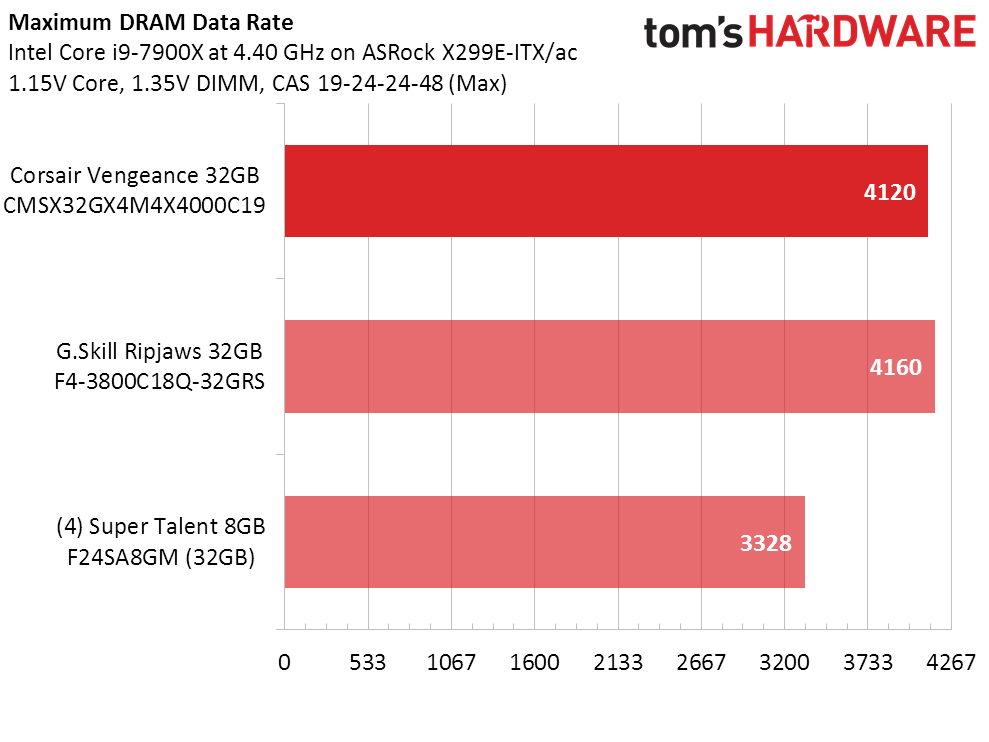
Both the Vengeance and Ripjaws modules also have similar overclocking capability, though the Ripjaws gets a greater percent-overclock thanks to its lower starting point. But if we were going by percent-over-stock, the Super Talent DDR4-2400’s overclock looks enormous.
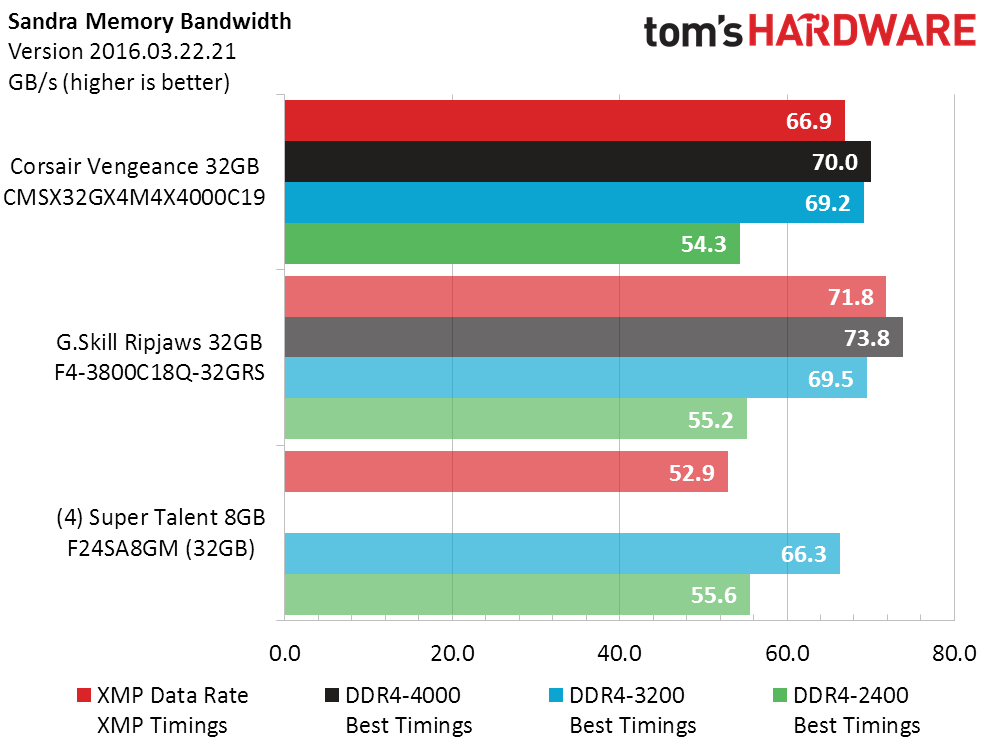
Value seekers will see the DDR4-2400’s memory bandwidth at custom DDR4-3200 settings and perhaps think that they should replicate this overclock. Unfortunately, the only way you’ll get a factory-verified overclock is to buy overclocked RAM such as the Vengeance or Ripjaws. Cheapskates can’t know or even guess that they’ll be as lucky as we’ve been.
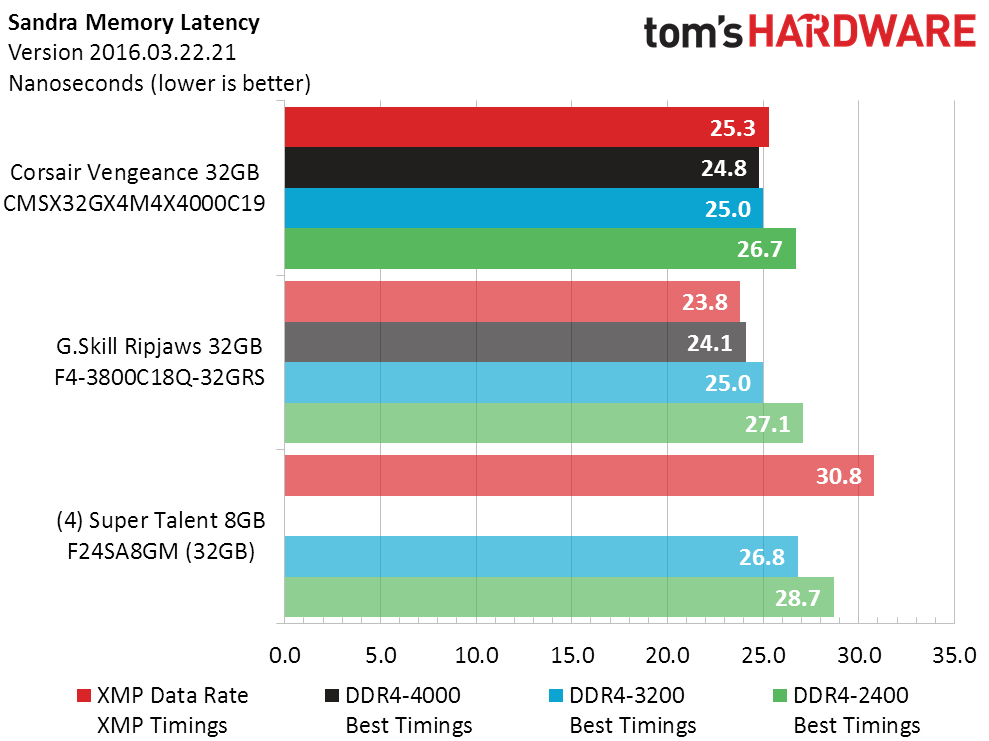
Slow stock timings (tRCD, tRP, tRAS, and tRFC) put the Vengeance DDR4-4000 behind the Ripjaws DDR4-3800 in Sandra Latency, when both are set to XMP values. They come out roughly equal in this metric when using manually optimized timings.
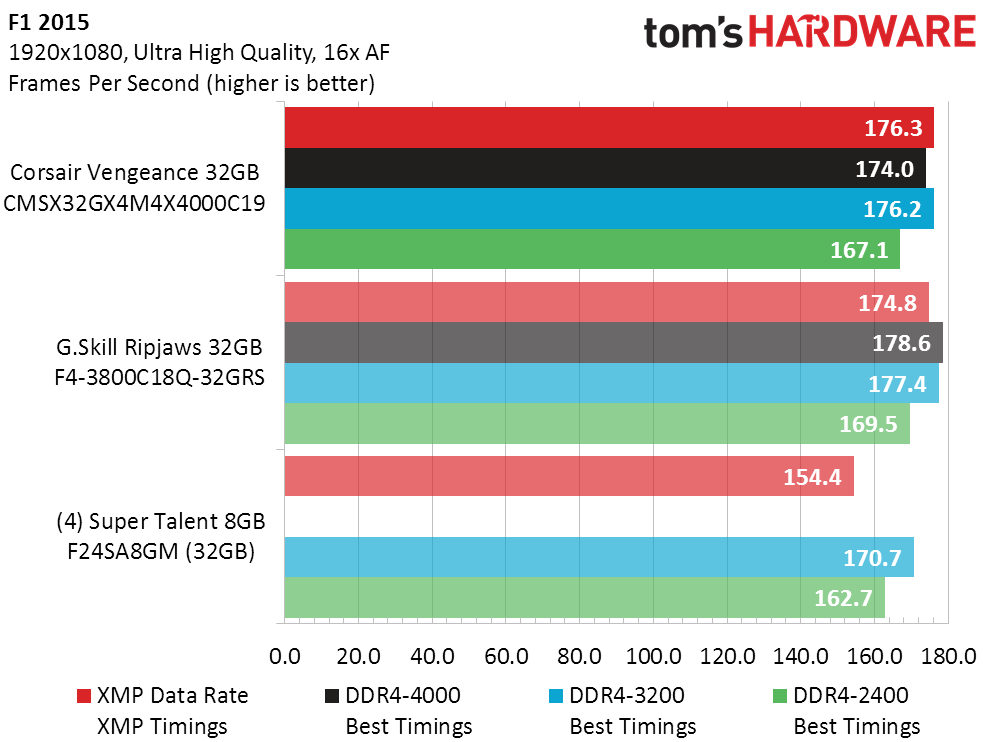
The Vengeance and Ripjaws kits look very similar in F1 2015, a title that’s known to be constrained by memory performance (once CPU frequency and GPU capability have been optimized). On the other hand, the cheap kit’s DDR4-3200 settings also produce strong results.
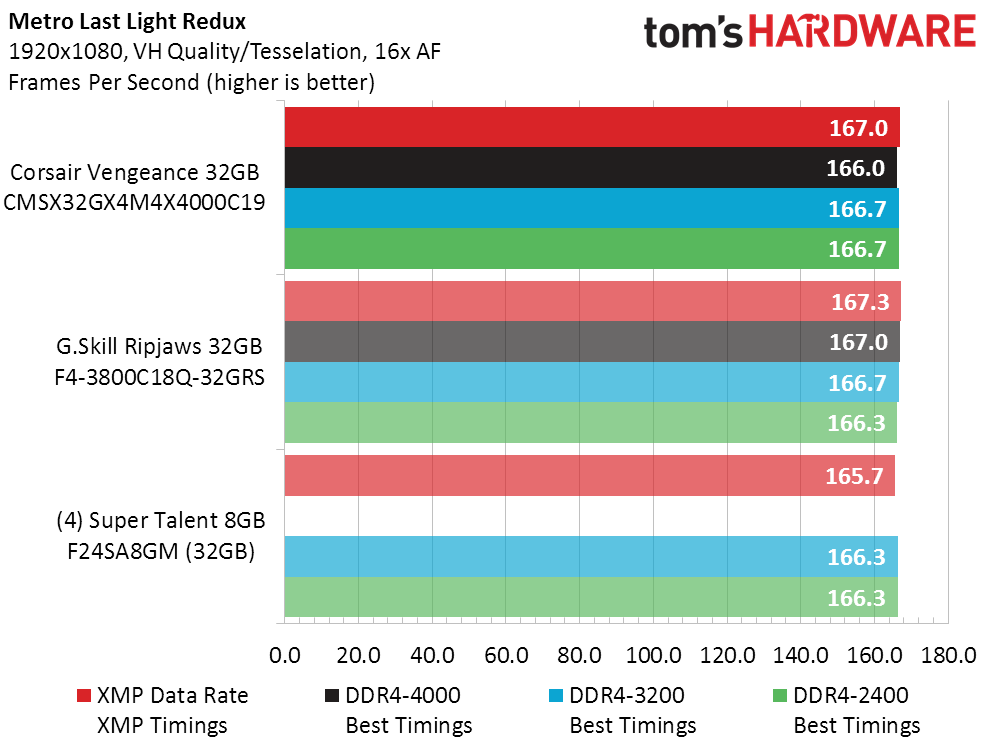
Metro: Last Light is closer to the typical gaming scenario, in that it has shown us noticeable differences between memory configurations, but only when one of those configurations is deficient (such as yesteryear’s dual-channel DDR3). Nearly any DDR4 quad-channel configuration is more than enough to satisfy its needs.
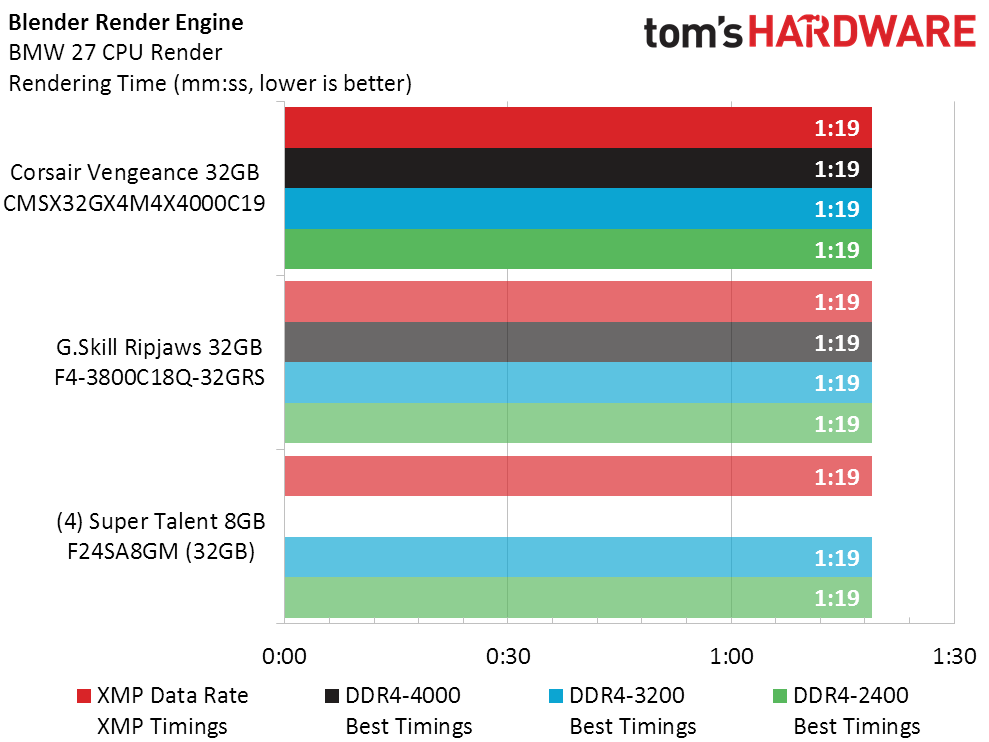
The thing we just said about Metro also applies to Blender. The funny thing is that this benchmark is too short to show real differences, which tend to be around half a second, from the best to the worst DDR4 quad-channel configuration.
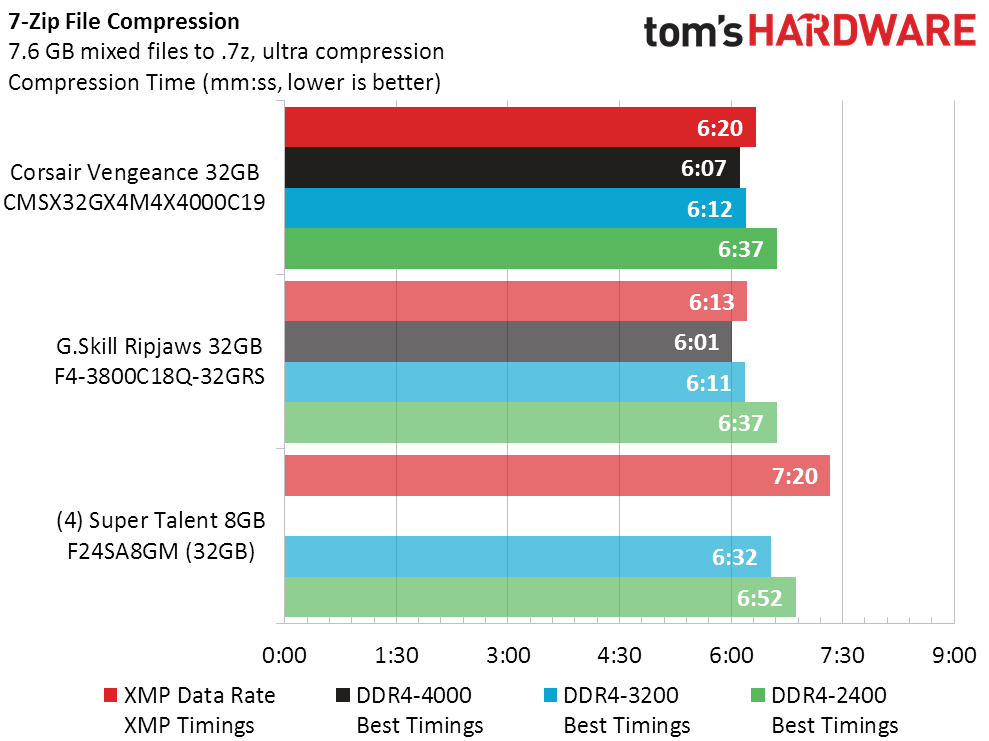
Ripjaws DDR4-3800 wins the 7-Zip test at all settings, likely due to shorter secondary and tertiary timings. Vengeance is close, and it carries the DDR4-4000 certification.
Final Analysis
Fortune favors the bold, and those seeking the best value in performance memory can often find it by overclocking. On the other hand, those who’ve already made their fortune can pay someone else to do their overclocking, and that’s where premium RAM becomes valuable.
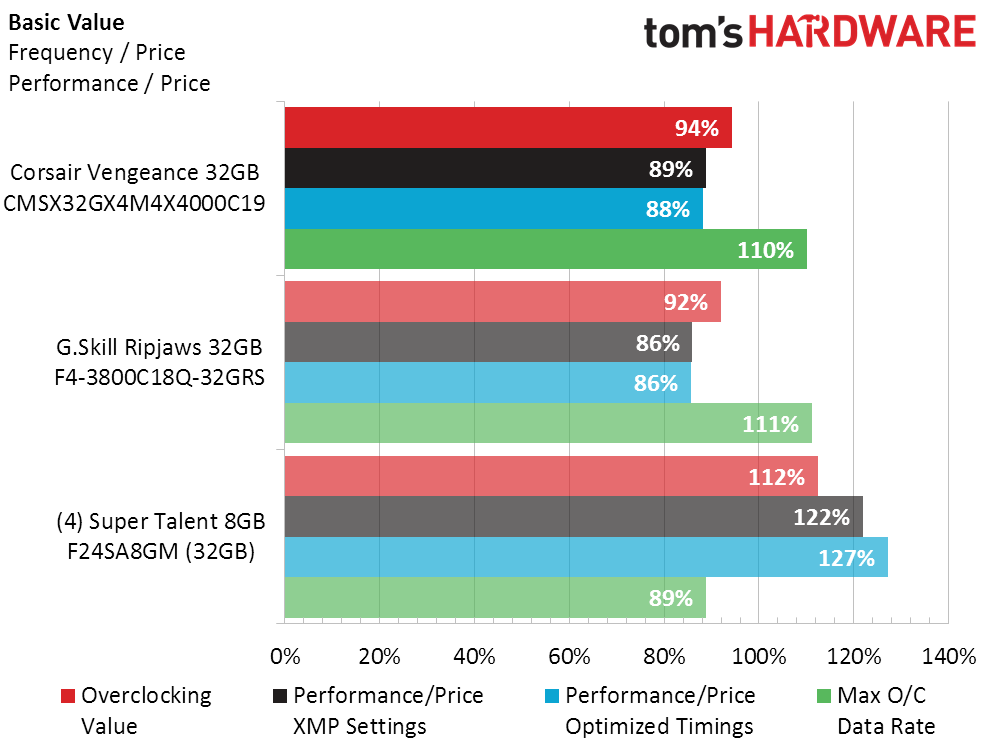
Despite the Vengeance DDR4-4000 having a slightly higher list price than Ripjaws DDR4-3800, the Vengeance kit is available at a lower price through Amazon, compared to the Ripjaws pricing we saw a few weeks back at Newegg. As we write this, the Ripjaws kit is now out of stock at Newegg, and seemingly everywhere. Still, a G.Skill rep told us that it should be back in stock in short order, and--who knows?--it's possible G.Skill may tweak the pricing in response. And then, everybody will win. (That is, everyone with more than $500 to spend on RAM.)
So, which would we choose, assuming both were on hand to choose between? Since the two kits are so similar, the bucks-up buyer would probably be best just getting the cheaper of the two and spending the savings on his or her favorite beverage.
MORE: Best Memory
MORE: DDR DRAM FAQs And Troubleshooting Guide
MORE: All Memory Content
Stay On the Cutting Edge: Get the Tom's Hardware Newsletter
Get Tom's Hardware's best news and in-depth reviews, straight to your inbox.
-
blackmagnum Now if we could upgrade the RAM chips on the graphics cards like the old days, I could see a clear benefit for these guys.Reply
